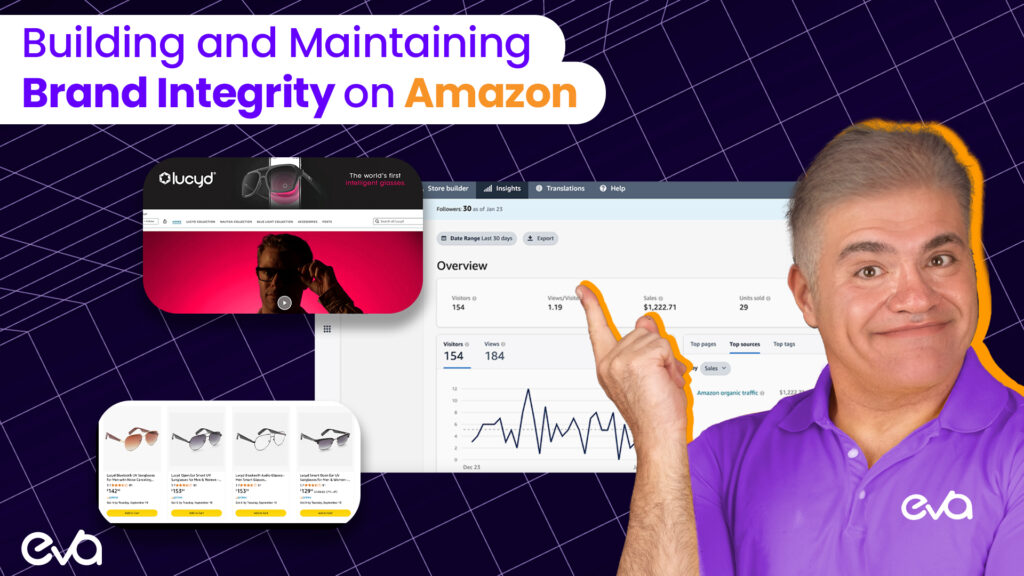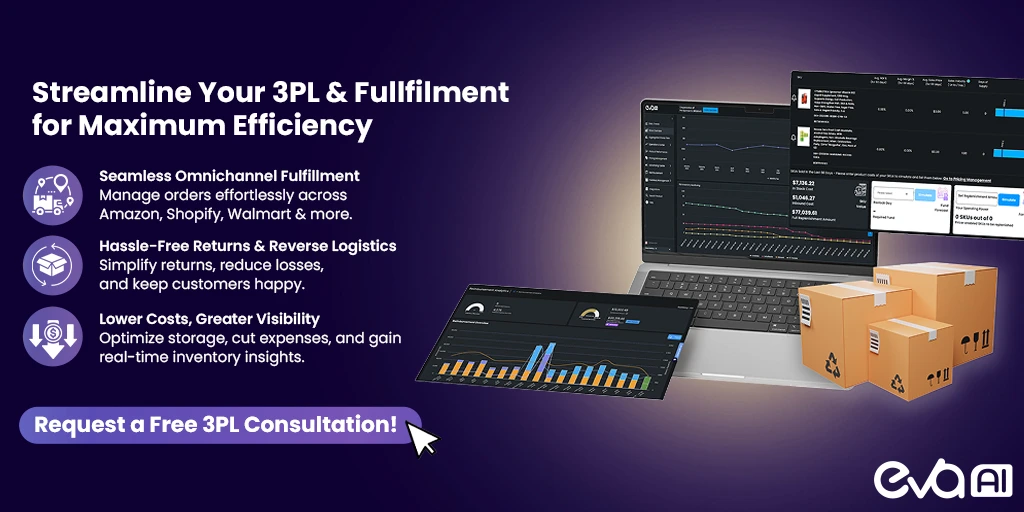Table of Contents
- Introduction
- Efficient Amazon Account Administration
- Crafting a Winning Marketing Strategy
- Mastering SEO and Product Listing Optimization
- Harnessing the Power of Amazon Advertising
- Comprehensive Amazon Account Management
- Simplifying Seller Central Management
- Advanced Amazon Advertising Tactics
- When to Seek Professional Amazon Management Help
- How EVA Can Help Your Amazon Store Management
- Conclusion
- Frequently Asked Questions (FAQ)
Introduction
Brand consistency is vital to standing out in Amazon’s crowded marketplace. It involves ensuring that all aspects of your Amazon presence—product listings, customer communication, and packaging—are aligned with your brand’s identity.
- Customer Trust: A consistent brand image builds trust and helps customers recognize your products across different categories and platforms.
- Professional Image: Consistency in branding portrays a professional image, which can help you differentiate your products from competitors.
- Improved Customer Loyalty: When customers have a reliable experience with your brand, they’re more likely to return and make repeat purchases.
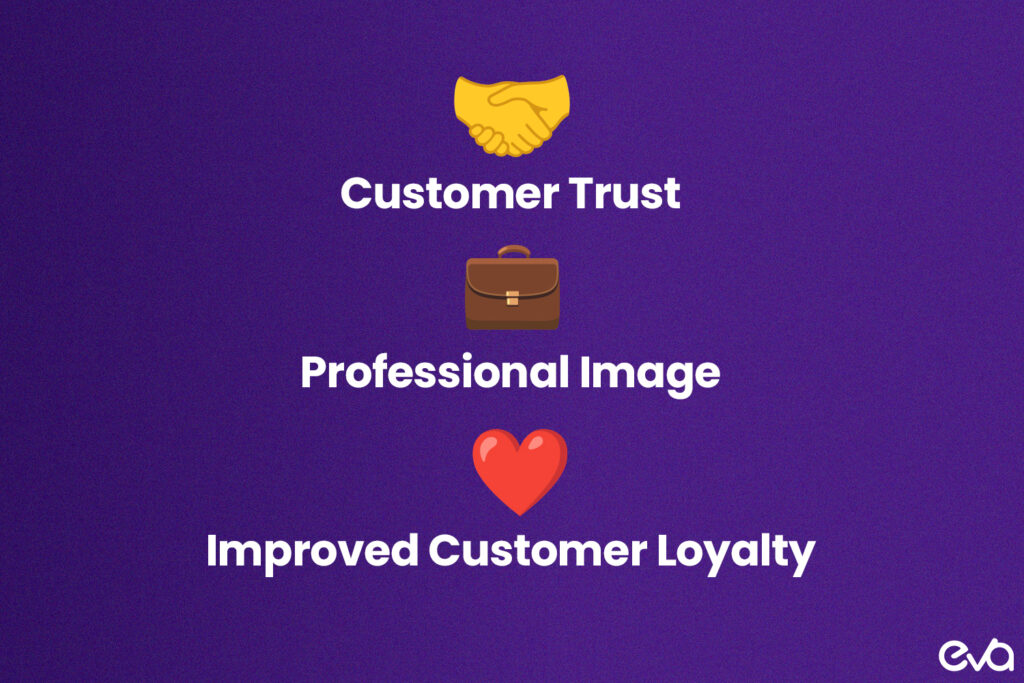
How to Keep Your Branding Cohesive Across All Listings
To maintain a cohesive brand across your Amazon listings:
- Consistent Visuals: Use the same style of images, fonts, and color schemes across all your listings.
- Unified Messaging: Ensure that your product titles, bullet points, and descriptions reflect your brand’s tone and values consistently.
- Brand Guidelines: Develop a set of brand guidelines that detail everything from logo usage to language style. Share these guidelines with anyone who manages your listings or marketing materials.

Using Amazon’s Brand Registry to Protect Your Brand
Amazon’s Brand Registry program is a powerful tool for protecting your brand on the platform. It provides several benefits:
- Control Over Listings: The Brand Registry gives you more control over your product listings, allowing you to prevent unauthorized changes.
- Protection Against Counterfeits: The program helps to prevent counterfeit products from being sold under your brand name by enabling you to report violations directly to Amazon.
- Access to Enhanced Tools: Registered brands gain access to additional tools, such as A+ Content, which allows for more detailed and visually appealing product descriptions.
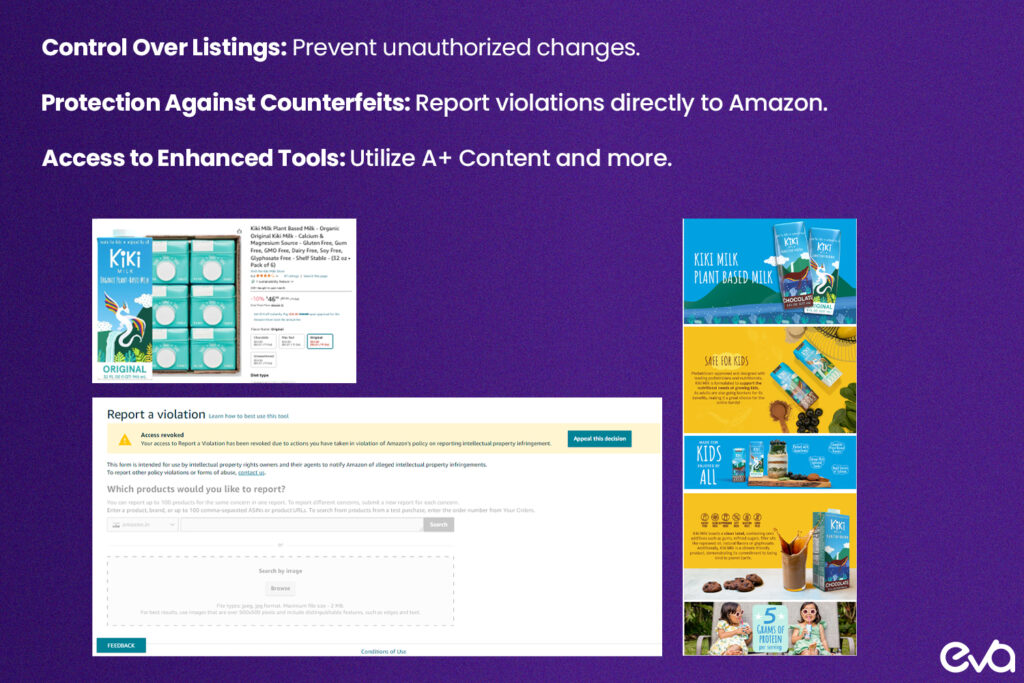
Attracting and Retaining Customers Through Strong Branding
Building a strong brand on Amazon is key to attracting and retaining customers. Here’s how to do it:
- Compelling Brand Story: Share your brand’s story in your Amazon storefront and product descriptions. A strong narrative can create an emotional connection with customers.
- Engage on Social Media: Use social media to build a community around your brand. Engaging content can drive traffic to your Amazon listings and increase sales.
- Consistent Quality: Ensure that every product you sell meets the same high standards of quality. Consistency here will encourage repeat purchases and positive reviews.
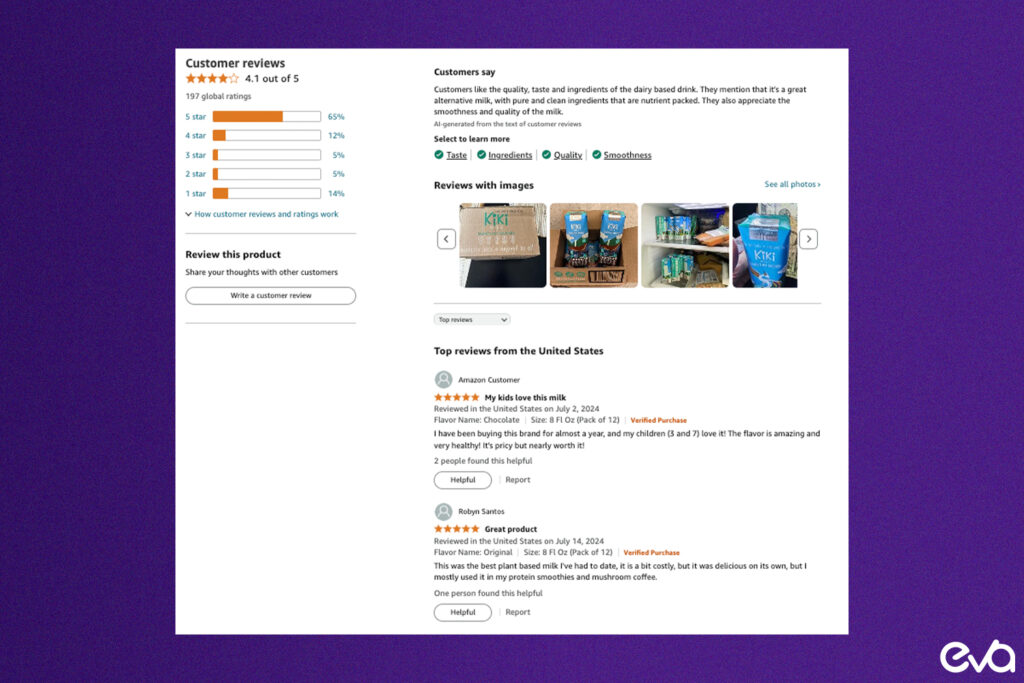
Efficient Amazon Account Administration
Navigating Amazon’s Seller Support
Amazon’s Seller Support is a valuable resource, especially when you encounter challenges or need assistance with your account. Efficiently navigating this support system can save you time and prevent disruptions in your operations.
- Be Specific in Your Requests: When contacting Seller Support, provide detailed and specific information about your issue to expedite the resolution process.
- Use the Appropriate Channels: Amazon offers multiple support channels—email, phone, and live chat. Choose the channel that best suits the urgency and complexity of your issue.
- Document Your Interactions: Keep records of all communications with Seller Support, including case numbers and correspondence. This documentation can be crucial if an issue escalates.
Dealing with Amazon’s Guidelines and Policy Changes
Amazon frequently updates its guidelines and policies, which can have a significant impact on your operations. Staying compliant with these changes is essential to maintaining your selling privileges.
- Regularly Review Updates: Make it a habit to check for policy updates in Seller Central and adjust your business practices accordingly.
- Train Your Team: Ensure that everyone involved in managing your Amazon store is aware of the latest guidelines and knows how to implement them.
- Seek Expert Advice: For significant policy changes that might affect your business model, consider consulting with a legal expert or an experienced Amazon consultant.
Ensuring Compliance with Amazon’s Terms of Service
Compliance with Amazon’s Terms of Service is non-negotiable. Failure to adhere to these terms can lead to account suspension or permanent removal from the platform.
- Understand the Rules: Thoroughly read and understand Amazon’s Terms of Service, particularly those related to selling practices, product restrictions, and customer communications.
- Avoid Risky Practices: Steer clear of prohibited practices such as manipulating reviews, offering incentives for positive feedback, or selling restricted products.
- Regular Audits: Conduct regular audits of your Amazon store to ensure ongoing compliance. This includes reviewing listings, customer interactions, and fulfillment processes.
Crafting a Winning Marketing Strategy
Developing an Amazon-Specific Marketing Plan
A tailored marketing plan is essential for driving sales and growing your Amazon business. This plan should be comprehensive, covering all aspects of your Amazon presence.
- Keyword Research: Identify the keywords that your target customers are using. Tools like Helium 10 or AMZScout can help you find high-volume, low-competition keywords.
- Optimizing Listings: Use your keyword research to optimize your product titles, descriptions, and bullet points. Ensure your listings are compelling and clearly communicate the benefits of your products.
- Promotions and Deals: Leverage Amazon’s promotional tools, such as Lightning Deals and Coupons, to attract new customers and boost sales during peak shopping periods.
Leveraging Amazon’s Marketing Tools
Amazon offers a variety of marketing tools that can help you promote your products effectively:
- A+ Content: Enhance your product detail pages with A+ Content, which allows you to add rich media elements like images, videos, and comparison charts to your listings.
- Sponsored Ads: Utilize Amazon’s advertising options, including Sponsored Products, Sponsored Brands, and Sponsored Display ads, to increase visibility and drive traffic to your listings.
- Amazon Coupons: Offer discounts through Amazon’s Coupon program to entice shoppers looking for deals. This can be particularly effective during sales events like Prime Day.
Creating Promotions and Deals to Boost Sales
Promotions and deals are powerful tools for increasing sales on Amazon. To create effective promotions:
- Leverage Time-Limited Offers: Create urgency by running time-limited offers, such as Lightning Deals or flash sales, to encourage quick purchases.
- Bundle Products: Offer product bundles at a discounted price to increase the average order value and sell more products in one transaction.
- Maximize Amazon Events: Participate in Amazon’s promotional events, such as Prime Day or Black Friday, to take advantage of increased traffic and sales.
Mastering SEO and Product Listing Optimization
The Role of SEO in Amazon Store Success
Search engine optimization (SEO) is critical to your Amazon store’s success. Proper SEO ensures your products are visible to potential customers who are searching for related items on Amazon.
- Boosted Visibility: Well-optimized listings rank higher in Amazon’s search results, increasing the likelihood that customers will find and purchase your products.
- Higher Traffic: Improved visibility directly correlates with higher traffic to your product pages, leading to more sales opportunities.
- Enhanced Conversion Rates: Optimized listings not only attract more visitors but also convert them into buyers by effectively communicating the value of your products.
How to Conduct Keyword Research for Amazon Listings
Effective keyword research is the backbone of a successful Amazon SEO strategy. To conduct thorough keyword research:
- Utilize Amazon’s Search Bar: Amazon’s autocomplete feature can provide insights into popular search terms. Start typing a keyword related to your product, and Amazon will suggest additional relevant terms.
- Use Keyword Research Tools: Tools like Helium 10, Jungle Scout, or Sonar are excellent for identifying high-traffic keywords with low competition.
- Analyze Competitor Listings: Examine the top competitors in your category to identify the keywords they’re targeting and consider incorporating them into your listings.
Optimizing Product Titles, Descriptions, and Bullet Points
Once you have identified your target keywords, the next step is to optimize your product listings:
- Product Titles: Include your primary keywords in the product title while keeping it concise and descriptive. Ensure the title clearly communicates what the product is and its main benefits.
- Product Descriptions: Expand on the benefits and features of your product in the description. Use secondary keywords naturally and focus on persuasive language that encourages purchasing.
- Bullet Points: Highlight the key features and benefits in bullet points. Each point should be clear, concise, and easy to read, incorporating relevant keywords naturally.
How Can I Improve My Product Listings?
To improve your product listings:
- Optimize Keywords: Conduct thorough keyword research and incorporate relevant keywords naturally into your product titles, descriptions, and bullet points.
- Use High-Quality Images: Invest in professional photography to ensure your product images are clear, high-resolution, and meet Amazon’s image requirements.
- Highlight Product Benefits: Focus on the key benefits of your products in the descriptions and bullet points, and use persuasive language to encourage conversions.
- Encourage Customer Reviews: Positive reviews are essential for building trust and credibility. Encourage satisfied customers to leave reviews and address any negative feedback professionally.
Importance of High-Quality Images and Customer Reviews
High-quality images and positive customer reviews are essential for converting visitors into buyers:
- Images: Ensure that your product images are high-resolution, professionally taken, and meet Amazon’s image requirements. Use multiple images to showcase different angles, features, and the product in use.
- Customer Reviews: Positive reviews build trust and credibility. Encourage satisfied customers to leave reviews and respond professionally to any negative feedback to demonstrate excellent customer service.
Harnessing the Power of Amazon Advertising
Running Successful Paid Ad Campaigns on Amazon
Paid advertising on Amazon can significantly boost your product visibility and sales. Here’s how to run effective ad campaigns:
- Set Clear Objectives: Define the goals of your ad campaign, whether it’s to increase sales, improve brand awareness, or clear out inventory.
- Target the Right Audience: Use Amazon’s targeting options to focus on the most relevant audience for your products, such as customers searching for similar items or interested in related categories.
- Monitor and Adjust: Regularly monitor your ad performance and make adjustments as needed to optimize your results. This includes tweaking your bids, refining your targeting, and testing different ad creatives.

Understanding Amazon’s Advertising Options
Amazon offers a variety of advertising formats, each suited to different goals and budgets:
- Sponsored Products: These ads appear in search results and on product pages, promoting individual products. They’re ideal for driving direct sales.
- Sponsored Brands: These ads showcase your brand logo and multiple products, appearing at the top of search results. They’re perfect for building brand awareness.
- Sponsored Display: These ads target customers on and off Amazon based on their browsing behavior. Sponsored Display is useful for retargeting and expanding reach beyond Amazon’s platform.
Best Practices for Ad Budget Management
Effective budget management is crucial to maximizing the return on investment (ROI) of your Amazon ad campaigns:
- Set a Daily Budget: Determine a daily budget that aligns with your overall marketing goals and stick to it. This prevents overspending and ensures consistent ad performance.
- Focus on High-Performing Products: Allocate more of your ad budget to products that have proven to convert well, as they’re likely to generate the best ROI.
- Track ACOS: Monitor your Advertising Cost of Sales (ACOS) regularly. A lower ACOS means you’re spending less on ads relative to the revenue generated, which is a positive sign of ad efficiency.
Analyzing Ad Performance and Adjusting Strategies
Continuous analysis and optimization are key to maintaining successful ad campaigns:
- Review CTR: The Click-Through Rate (CTR) measures how often people click on your ad after seeing it. A high CTR indicates that your ad is relevant to the audience it’s targeting.
- Evaluate Conversion Rates: Conversion rates show how many clicks resulted in actual purchases. Low conversion rates may suggest that your product page needs optimization or that your ad targeting needs refinement.
- Calculate ROAS: Return on Ad Spend (ROAS) is a critical metric that measures the effectiveness of your ad campaigns. A high ROAS indicates a successful campaign, while a low ROAS may require adjustments in strategy.
Comprehensive Amazon Account Management
The Role of an Amazon Account Manager
An Amazon account manager can play a pivotal role in the success of your store by offering specialized expertise and support:
- Strategic Planning: Account managers help in developing and implementing growth strategies tailored to your business goals.
- Performance Monitoring: They track key performance indicators (KPIs) and provide insights on how to improve them, such as increasing conversion rates or lowering fulfillment costs.
- Issue Resolution: Account managers can quickly resolve issues with your account, such as listing errors, policy violations, or account suspensions, minimizing disruption to your business.
How Account Managers Can Help Grow Your Business
An experienced Amazon account manager can significantly contribute to your business’s growth by:
- Optimizing Product Listings: They ensure that your product listings are optimized for both search and conversions, improving visibility and sales.
- Managing Advertising Campaigns: Account managers can create and manage your Amazon advertising campaigns, optimizing them for maximum return on investment.
- Expanding Product Lines: They provide insights into new product opportunities, helping you to expand your offerings and enter new markets.
Choosing the Right Account Management Partner
When selecting an account management partner, consider the following:
- Experience: Look for a partner with a proven track record in managing Amazon accounts, particularly in your product category.
- Service Range: Ensure that the partner offers a comprehensive range of services, including listing optimization, inventory management, and advertising management.
- Client Feedback: Check reviews and testimonials from other clients to gauge the partner’s effectiveness and reliability.
Simplifying Seller Central Management
Tips for Efficiently Managing Your Seller Central Account
Seller Central is the hub of your Amazon business. Efficient management can save you time and improve your store’s performance:
- Automate Routine Tasks: Use automation tools to handle repetitive tasks such as order processing, inventory updates, and pricing adjustments.
- Leverage Seller Central Reports: Regularly review reports on inventory, orders, and advertising to track your performance and identify areas for improvement.
- Stay Organized: Keep your Seller Central account organized by periodically cleaning up old listings, archiving completed orders, and updating account settings as needed.
Using Seller Central’s Tools and Reports Effectively
Seller Central provides a variety of tools and reports that can help you manage your account more effectively:
- Inventory Reports: Use these reports to monitor your stock levels and ensure that you’re not overstocked or running low on inventory.
- Order Reports: Track your sales performance and identify trends that can inform your inventory and marketing strategies.
- Advertising Reports: Analyze the performance of your ad campaigns to determine which ads are driving the most traffic and sales.
Streamlining Operations Through Automation and Third-Party Tools
Automation and third-party tools can significantly streamline your Amazon operations, saving you time and reducing the risk of errors:
- Repricing Tools: These tools automatically adjust your prices based on competitor activity, ensuring that your products remain competitive.
- Inventory Management Software: Tools like InventoryLab or RestockPro can help you track stock levels, forecast demand, and automate reordering.
- Third-Party Integrations: Integrate third-party tools with Seller Central to enhance your operations, such as order management and fulfillment solutions that streamline the shipping process.
Advanced Amazon Advertising Tactics
Expanding Your Reach with Targeted Ad Campaigns
Advanced advertising tactics can help you expand your reach and attract more customers to your Amazon store:
- Product Targeting: Use Amazon’s Product Targeting feature to place your ads on specific product pages or within certain categories, allowing you to reach customers who are already interested in similar products.
- Audience Targeting: Amazon’s Audience Targeting options let you reach customers based on their shopping behavior, demographics, and interests, making your ads more relevant and effective.
- Experiment with New Formats: Explore different ad formats, such as Sponsored Display ads, which can retarget customers who have shown interest in your products or similar items.
Using Data to Drive Advertising Decisions
Data is the backbone of successful advertising on Amazon. Here’s how to use it to your advantage:
- Analyze Historical Performance: Review past ad campaigns to identify what worked and what didn’t. Use this information to refine your current strategies.
- Test and Optimize: Continuously test different ad variations, such as headlines, images, and targeting criteria, to see what resonates best with your audience.
- Monitor Competitor Ads: Keep an eye on your competitors’ ads to understand their strategies and identify opportunities to differentiate your own ads.
Retargeting Strategies for Increasing Repeat Purchases
Retargeting is an effective way to increase repeat purchases and build customer loyalty:
- Sponsored Display Ads: Use Amazon’s Sponsored Display ads to retarget customers who have viewed your products or similar items, reminding them to complete their purchase.
- Custom Audiences: Build custom audiences based on past customer behavior, such as those who have previously purchased from you, and target them with tailored ads.
- Offer Incentives: Use retargeting ads to offer incentives, such as discounts or free shipping, to encourage repeat purchases and build long-term customer relationships.
When to Seek Professional Amazon Management Help
Signs It’s Time to Partner with Amazon Experts
Running an Amazon store can be demanding, and there may come a time when professional help is needed. Here are some signs that it might be time to seek expert assistance:
- Overwhelmed by Daily Tasks: If managing daily operations is taking too much time and affecting your ability to grow the business, professional management can help.
- Stagnant or Declining Sales: If your sales have plateaued or started to decline, an expert can analyze your store and recommend strategies to boost performance.
- Frequent Account Issues: If you’re constantly dealing with account suspensions, policy violations, or other issues, professional management can help resolve these problems and prevent future occurrences.
Evaluating Your Current Store Performance
Before deciding to partner with Amazon experts, evaluate your current store performance:
- Sales Metrics: Review your sales data over the past few months to identify trends and areas that need improvement.
- Customer Feedback: Analyze customer reviews and feedback to understand what’s working well and what needs attention.
- Operational Efficiency: Assess how efficiently your store is running, including inventory management, order fulfillment, and customer service.
How Professionals Can Take Your Store to the Next Level
Partnering with Amazon management professionals can elevate your store’s performance in several ways:
- Expert Optimization: Professionals can optimize your listings, advertising campaigns, and customer service processes, driving higher sales and better customer satisfaction.
- Strategic Growth: With their experience, professionals can identify growth opportunities, such as new product lines or market expansions, that you might not have considered.
- Operational Support: By handling day-to-day operations, professionals free up your time to focus on strategic decisions and business development.
How EVA Can Help Your Amazon Store Management
Unique Features and Benefits of EVA for Amazon Sellers
EVA offers a comprehensive suite of tools designed to help Amazon sellers manage and optimize their stores more effectively. Here are some of the standout features and benefits:
- Advanced Analytics: EVA provides detailed analytics and reporting tools that give you insights into your store’s performance, helping you make data-driven decisions.
- Inventory Management: EVA’s inventory management tools help you keep track of stock levels, avoid stockouts, and optimize your replenishment processes.
- Pricing Optimization: EVA’s dynamic pricing tools automatically adjust your prices based on market conditions and competitor activity, ensuring you remain competitive.
Optimizing Ad Spend with EVA’s Tools
EVA’s advertising tools are designed to help you maximize your return on ad spend (ROAS):
- Automated Campaign Management: EVA’s platform automates your ad campaigns, adjusting bids and budgets in real-time to optimize performance.
- Comprehensive Reporting: EVA offers in-depth reporting on your ad performance, allowing you to refine your strategies and achieve better results.
- Targeted Ad Campaigns: EVA’s targeting tools help you reach the right audience, ensuring your ads are seen by potential customers who are most likely to convert.
Fulfillment and Inventory Management
EVA also offers tools to streamline your fulfillment and inventory management processes:
- Multi-Channel Fulfillment: EVA integrates with multiple sales channels, allowing you to manage your inventory and fulfillment across platforms from a single dashboard.
- Real-Time Inventory Tracking: EVA’s real-time inventory tracking tools help you stay on top of stock levels, reducing the risk of stockouts or overstock situations.
- Shipping Optimization: EVA’s platform optimizes your shipping processes, helping you reduce costs and improve delivery times, which can enhance customer satisfaction.
Conclusion
Recap of Best Practices for Amazon Store Management and Maintenance
Effective Amazon Store Management is about more than just listing products. It involves strategic planning, continuous optimization, and a commitment to providing excellent customer service. By following the best practices outlined in this guide, you can:
- Maximize Profit Margins: Through effective inventory management, competitive pricing, and optimized fulfillment processes, you can reduce costs and increase profitability.
- Enhance Customer Satisfaction: Delivering high-quality products, providing excellent customer service, and managing feedback effectively are key to building a loyal customer base.
- Stay Competitive: Regularly monitor your store’s performance, adapt to market changes, and refine your strategies to maintain a competitive edge on Amazon.
Final Tips for Sustaining Long-Term Success on Amazon
To achieve and sustain long-term success on Amazon:
- Remain Agile: The e-commerce landscape is constantly evolving. Stay flexible and be prepared to adapt your strategies as needed to respond to new challenges and opportunities.
- Invest in Professional Assistance: As your business grows, consider partnering with Amazon management experts who can help you scale your operations and optimize performance.
- Prioritize the Customer Experience: Ultimately, your success on Amazon hinges on your ability to meet and exceed customer expectations. Make customer satisfaction a top priority in all aspects of your business.
Frequently Asked Questions (FAQ)
Sellers often struggle with inventory management, competitive pricing, customer feedback, policy compliance, and choosing the right fulfillment method.
Optimize keywords, use high-quality images, write clear descriptions, engage with reviews, and utilize A+ Content if available.
Use real-time tracking, automate reordering, forecast demand, diversify suppliers, and select the best fulfillment strategy.
FBA offers Prime eligibility, streamlined logistics, increased customer trust, global reach, and simplified returns.
Regularly review updates, understand guidelines, avoid restricted practices, seek advice if needed, and conduct audits.

